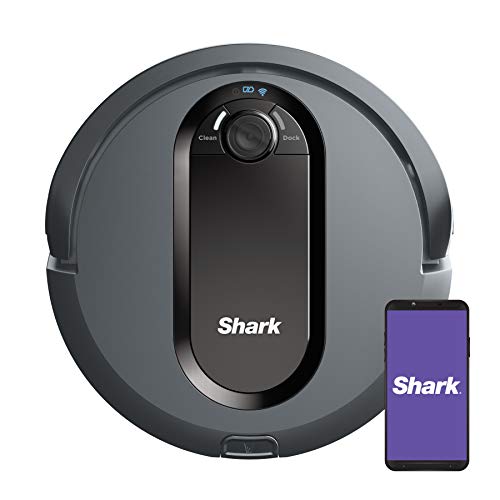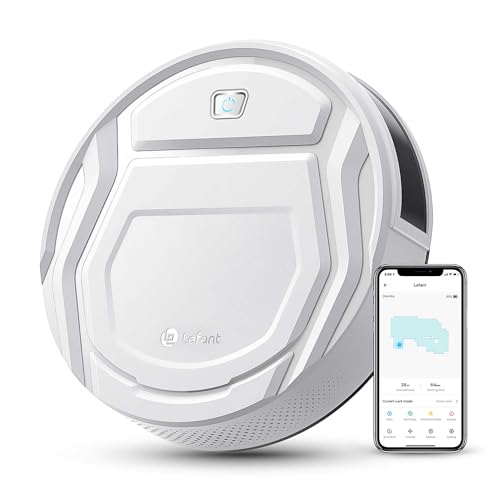Self Emptying Robot Vacuum For Pet Hair 101"The Ultimate Guide Fo…
페이지 정보
작성자 Reyna Foreman 작성일24-04-02 22:01 조회4회 댓글0건관련링크
본문
 Self Emptying Robot Vacuum For Pet Hair
Self Emptying Robot Vacuum For Pet Hair If you have pets, a robotic vacuum with a big dust bin is a good option. It can hold a large amount of pet hair. It's also helpful to look for a model with object avoidance technology that recognizes and veers around everyday objects like socks, cables, and toys.
If you have pets, a robotic vacuum with a big dust bin is a good option. It can hold a large amount of pet hair. It's also helpful to look for a model with object avoidance technology that recognizes and veers around everyday objects like socks, cables, and toys.What is a self emptying robot vacuum?
Self-emptying robot vacuums are an type of floor-cleaning appliance that automatically empties the debris it collects into its docking station. The docking station comes with a dust bag to collect the pet hairs, dirt and debris that the robot gathers as it cleans. When the dust bag is full, just remove it from the base station and replace it. This feature removes the requirement to empty a robot's onboard dust bin after each use, which saves you time and energy. This feature also prevents dust from the vacuum's dustbin, and then being blown into the air. This is particularly beneficial for families with allergies.
The design of your home and the flooring you choose will determine whether or not you should invest in a robot vacuum that self-empties. If you have lots of carpeting in your home, choose a robot vacuum that is powerful enough to Vacuum mop pet Hair the carpet. You might need to vacuum more often in the event that you don't. If you have pets at your home, you will also want to choose a model with the latest navigation technology. This will allow you to avoid pet messes as much as other obstacles.
Certain self-emptying robotic vacuums may be programmed to empty their dustbins onboard into the docking station automatically after a certain number of minutes. This means that you don't need to do it manually each time. It's important to be aware that emptying robot vacuums can be very loud.
It's also crucial to check the brushroll and wheels of your robot vacuum frequently for pet hair. This can affect your robot's ability thoroughly clean your home. It can also block up the filter and reduce its suction power. Fortunately, the majority of robots have clean wheels and brushes which can be easily removed and cleaned using warm water.
Jodhaira is an analyst for product reviews at the Good Housekeeping Institute’s Cleaning Lab. She has tried a variety of floor-cleaning appliances including vacuum mop combo devices and robot vacuums. She has personally tested all the self-emptying robotics in this roundup.
What is the process by which an automated robot vacuum cleaner function?
The self-emptying feature is one of the most significant recent advancements in the design of robot vacuums. It eliminates a major disadvantage for most robotic vacuums: the need to empty their small onboard dustbin after each cleaning session. Instead, the majority of models with self-emptying bins come with docking stations that include a large vacuum cleaner bag and the robot is designed to dump its own waste into this larger bin. The process is typically automated and takes place at the moment that the robot returns to its dock for recharging and can be accomplished while you're doing anything else.
The most efficient self-emptying robots come with a number of useful features, too. Many are able to be controlled by an app that's compatible with your smartphone and allows you to create schedules and other settings and also watch a live feed of the robot's camera. Certain robots can detect changes in flooring, such as the transition from plain floors to carpeted ones and adjust the cleaning mode accordingly. They also typically offer more advanced features like mapping capabilities, a range of attachments, and even quiet modes for use at night.
Self-emptying machines are usually expensive, though, and may not be a good investment for everyone. It is crucial to weigh the benefits of this type of vacuum against your other priorities and decide if it would be useful for your home prior to buying one.
A self-emptying robot could be the perfect option for any home that requires some extra help in cleaning their home. It can save time for busy homeowners who do not have the time to pause while doing their daily chores and empty the dustbin onboard. It could also be able to run your robot cleaner more often. This is a small step towards the ultimate goal of having a completely hands-off cleaning machine, but it's a good starting point.
What are the benefits of a robot vacuum that self-empty?
Self-emptying robot vacuums are a great option for pet owners. The most important benefit is that they eliminate the need to empty your bins frequently, which means that you won't have to hover over your robot or worry about running out of bin space. It's also nice that you can schedule your robot to complete its job without interfering. The process of replacing bags and emptying the base is made easier, which reduces dust blowback. This can be helpful for those suffering from allergies.
Additionally the self-emptying robot will generally have a larger base than a standard charging dock, which means that it will be able to hold a greater amount of dirt and debris. This will help reduce the spread of allergens throughout your home which is an important aspect to consider if you own pets. The increased run time of a self-emptying robotic can also be a benefit for pet owners as it allows the robot to clean more thoroughly during every cleaning cycle.
Self-emptying robots will also cut down on the amount of time you devote to maintenance. You won't have to empty your onboard bin as often, but only the base once every couple of weeks. This is a huge benefit for parents, professionals and those with an active lifestyle.
It's important to remember that self-emptying robot vacuums aren't an answer to all your cleaning issues. Even the best vacuum mop combo for pet hair robot vacs aren't immune to getting stuck under furniture, on thresholds for doors or vacuum mop Pet hair in thick carpets. They can also clog or snag on stray clothes, shoelaces, or chargers for phones. So while a self-emptying robot will free up a bit of your time, you'll still require traditional vacuuming of those difficult to reach places and nooks.
Self-emptying robots can be somewhat noisy, and pets might be scared of the noise and motion of the machine. It is recommended to start slowly, letting your robot get used to the sound and movement of it as you run it around your home.
What are the disadvantages to a robot vacuum that self-empties?
Robot vacuums that have self-emptying bases make cleaning easier. You don't have to stop the cleaning process in the middle to empty the dust bin onboard. Instead you can simply put it in place and put it away. This makes them an excellent option for busy people who need to manage their cleaning while also juggling kids, work and other chores. A self-emptying vacuum is not the most convenient option. You must empty your robot vacuum regularly.
The storage onboard of the majority of self-emptying robot vacuums is relatively small, so they need to be cleaned more often than conventional models. This is especially true for homes where pet hair and other messes are accumulating quickly. Some require emptying every two or three cleaning sessions.
Another issue with robotic vacs is that they may get caught or tangled on objects, requiring human intervention to resolve. Some models claim to utilize sensors to stay clear of obstacles. However, this is not always the situation. They are still caught on shoelaces, cords and other stray toys.
Another major drawback of self-emptying robots is that they're generally expensive, which can be an issue for those on budgets that are tight. They also require docking stations which can be difficult to fit into smaller homes.
It's also crucial to determine whether the added functionality of a robot vacuum that self-empties is worth the cost. It's a good idea to check whether the model you're considering has a large enough bin to meet the needs of your family as well as looking for other useful features like Wi-Fi and smart home connectivity that can make the device more efficient.
It's also to be considered if you have someone in your family who might suffer from allergies. The use of a vacuum bag could result in dust being reintroduced into the air, which could trigger asthma and respiratory issues. You should also look for a robot that allows you to create zones that are not allowed to enter. This will stop the robot from entering your office, or coming too near antique rugs. Some older models require you to install strips, whereas the latest models let you designate "no-go" areas using their apps.
댓글목록
등록된 댓글이 없습니다.

